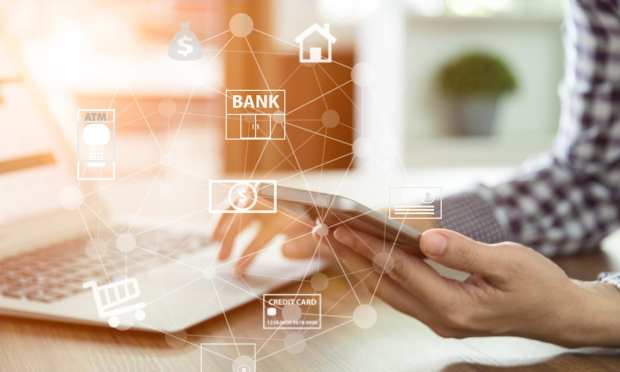Omnichannel Strategies Preserve The Best Of In-Branch And Digital-First Banking

That banking customers migrated to smartphones and apps in droves as a matter of necessity is now a matter of history. Going forward, digital experience is what banks, financial institutions (FIs) and merchants will be judged on. The time for being a laggard in this respect is gone.
PYMNTS November-December 2020 Digital-First Banking Tracker® done in collaboration with NCR Corporation, opens on that proposition by quantifying the mobile-digital shift.
“Recent PYMNTS data found financial institutions have witnessed a jump in consumers opening new accounts online or downloading mobile apps, with United States banks seeing a 60 percent increase in the number of consumers who have downloaded mobile banking apps this past April and May,” the Tracker states. “PYMNTS research has also found that a growing number of consumers are using digital banking tools much more frequently than they were prior to the pandemic’s onset, with 46 percent of consumers noting they had increased their use of online or mobile banking tools since that time.”
As those figures continue climbing as they most assuredly will, there’s also a balancing act to bridging aspects of the physical — branch banking, for example — with the digital-first products and experiences that now command the space.
‘One Cohesive Channel’
PYMNTS researchers have found consumers still desire branch banking, but as one option in a menu of services that increasingly skews digital. Bridging the two worlds is the trick.
“Banks will need to have a digital-first approach across all the channels customers are interacting with to provide a unified experience. That means transforming technology and operational systems [as well as] the culture within bank walls,” Douglas Brown, senior vice president and general manager at NCR Corporation, told PYMNTS.
Brown added, “Banks all across the country are partnering with FinTechs to provide the best user experience they can. That trend is going to accelerate in the coming years. But managing multiple vendors on antiquated technology is next to impossible.”
He said digital-first FIs are better positioned to meet new user expectancies around banking interactions, while providing “a solid platform that allows them to plug in the pieces and provide that differentiated but unified experience regardless of channel.”
“Merging physical and digital banking into one cohesive omnichannel experience could have notable benefits for banks, in fact. One recent study found that supporting omnichannel banking can double banks’ revenues as well as reduce their customer churn,” per the Tracker.
The Trust Transfer
Trust of branch banking is not something the industry can simply discard. In many cases it’s the original “experience” that literally grounded our most important financial relationship. This fact isn’t lost on banks and credit unions deep in innovation mode to preserve this crucial link.
“Banks may hesitate to turn their focus from digital or mobile banking when consumer adoption of these channels has skyrocketed, but studies suggest that consumers do not actually value digital solutions more than the availability of physical bank branches,” the Digital-First Banking Tracker® states. “This does not mean that consumers want the traditional brick-and- mortar banking of the past, however. They instead seek physical branches that can support the convenience and personalization they have come to expect from their digital banking apps.”
Call it omnichannel or multichannel banking — as long as you make it available. “Offering multichannel experiences reduces customer churn and increases cross-selling — sales of multiple banking products to individual consumers — by 30 percent each,” per the Tracker. “This could serve as an important game plan for banks looking to stand out from the pack, especially as the digital banking world becomes more saturated and competition grows more heated.”
